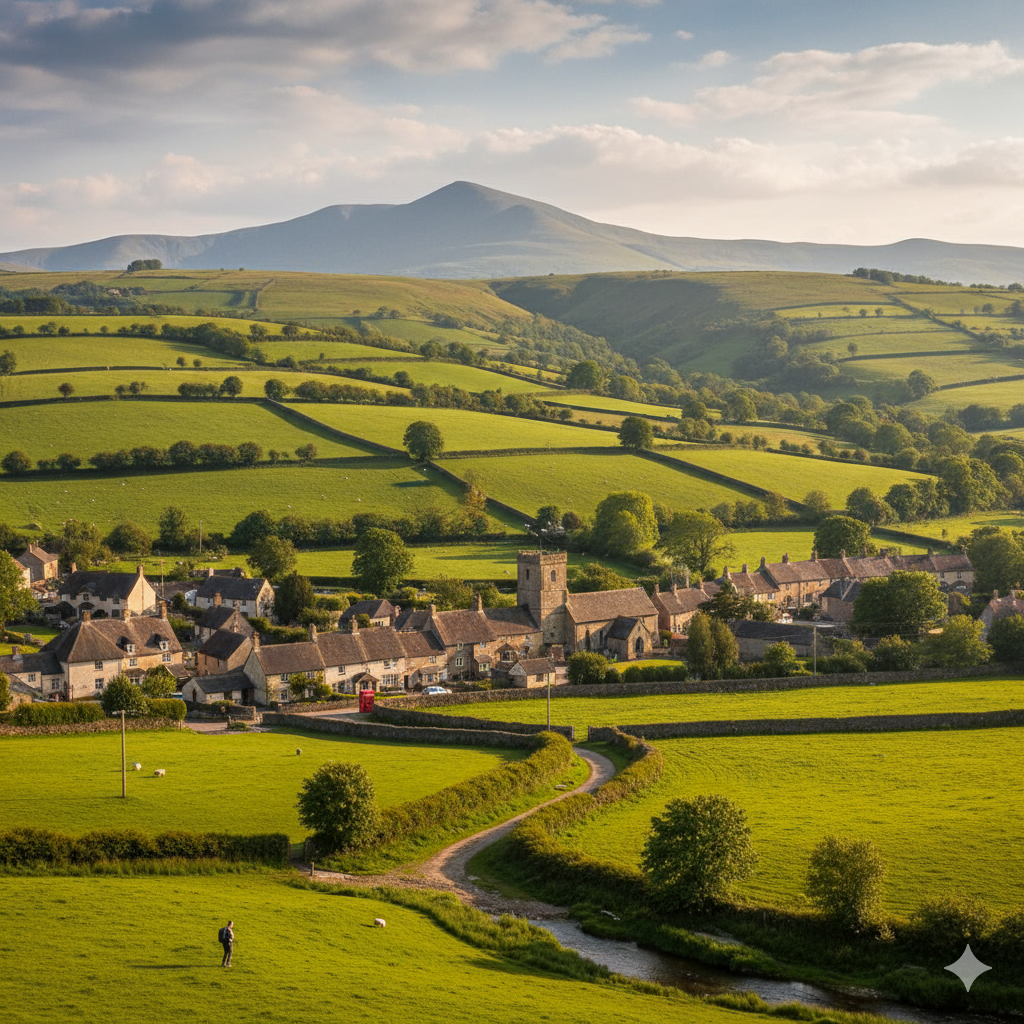The phrase “the UK countryside” instantly conjures images of rolling green fields, winding stone walls, quaint villages, and rugged coastlines. Yet, beyond its postcard beauty, the British countryside is a living, working landscape—one that shapes national identity, sustains local economies, and faces pressing modern challenges. Spanning England, Scotland, Wales, and Northern Ireland, the countryside offers not just scenery, but a blend of history, culture, and nature conservation that makes it one of the most fascinating landscapes in the world.
 A Kaleidoscope of Landscapes
A Kaleidoscope of Landscapes
The diversity of the UK’s countryside is astonishing. From towering peaks to gentle hills, each region offers a unique window into nature and culture.
| Region/Area | Defining Feature | Characteristic Scenery |
|---|---|---|
| The Lake District | England’s largest National Park | Glacial lakes, dramatic fells (mountains), and Wordsworth’s literary heritage |
| Scottish Highlands | Vast, mountainous wilderness | Lochs, glens, and Ben Nevis—the UK’s highest mountain |
| The Cotswolds | Area of Outstanding Natural Beauty (AONB) | Rolling hills, dry stone walls, and honey-colored limestone villages |
| The Yorkshire Dales | Iconic northern landscape | U-shaped valleys, moorlands, and networks of stone walls |
| The Jurassic Coast | UNESCO World Heritage Site | Fossil-rich cliffs, unique rock formations like Durdle Door |
| Snowdonia (Eryri), Wales | Land of myths and mountains | Slate-mining heritage, high peaks, and deep valleys |
Each of these areas has been protected through National Parks and National Landscapes (formerly AONBs). This commitment to conservation traces back to the “freedom to roam” movement of the early 20th century, which enshrined the public’s right to access the land (National Parks UK).

 The Cultural Heartbeat of the Countryside
The Cultural Heartbeat of the Countryside
The beauty of the countryside lies not only in landscapes but also in the heritage and traditions of rural communities.
Timeless Villages
Hamlets like Bibury in the Cotswolds or Castle Combe in Wiltshire are often described as the most picturesque villages in England. With thatched cottages, cobbled lanes, and medieval churches, they preserve a sense of history that feels untouched by time.The Country Pub
More than a place to drink, the pub is a social hub of village life. Many pubs are centuries old, offering local ales, seasonal produce, and fireside warmth. The Campaign for Real Ale (CAMRA) continues to champion these institutions as vital to cultural life (CAMRA UK).A Living History
The countryside is dotted with Roman ruins, Iron Age hill forts, and medieval castles. The vast network of public footpaths and bridleways—a legal “right to roam”—lets visitors literally walk through history, experiencing heritage firsthand.
 The Working Landscape: Farming and Rural Economy
The Working Landscape: Farming and Rural Economy
While often celebrated for beauty, the UK countryside is also a working landscape—shaped by centuries of farming, forestry, and local economies.
Agriculture
Over 70% of UK land is used for farming. The wetter west is dominated by livestock (sheep, cattle), while the drier east specializes in arable crops like wheat and barley. Although farming contributes a smaller share to the national economy, it remains vital for food security (DEFRA).Diversification
To adapt to economic pressures, many farmers diversify into farm shops, glamping, eco-tourism, and renewable energy projects. This not only sustains livelihoods but also makes the countryside more attractive to visitors.Rural Tourism
National Parks alone attract over 100 million visitors annually, supporting hotels, pubs, outdoor activity operators, and craft industries. This makes tourism one of the most significant rural economic drivers (VisitBritain).
 Modern Challenges Facing the Countryside
Modern Challenges Facing the Countryside
The UK countryside faces environmental and social pressures that demand careful management.
Biodiversity Loss
Despite its greenery, the UK is one of the most nature-depleted countries in Europe. Intensive farming, pesticide use, and habitat loss (hedgerows, wetlands) have led to sharp declines in wildlife.Climate Change
Flooding, drought, and changing weather patterns threaten farmland and fragile ecosystems like peat bogs and coastal habitats. Projects like the Environment Land Management Scheme (ELMS) aim to help farmers adapt with sustainable practices.Accessibility & Inclusivity
The countryside has sometimes been perceived as less welcoming to urban and diverse populations. Initiatives from groups like The Ramblers Association are working to ensure everyone feels included in accessing nature.Rewilding and Conservation
From the Knepp Estate in Sussex (a world-famous rewilding project) to Red Kite reintroductions in Wales, there is growing momentum for restoring ecosystems. These efforts show that sustainable land use can benefit both people and wildlife.
 Why the UK Countryside Still Matters
Why the UK Countryside Still Matters
The UK countryside is not just a retreat—it is:
A repository of history, holding traces of human life stretching back thousands of years.
A cultural icon, shaping art, literature, and national identity.
A working land, producing food, sustaining livelihoods, and supporting modern tourism.
A natural sanctuary, vital for biodiversity, climate resilience, and human well-being.
As pressures mount from urbanization, farming demands, and climate change, the challenge is finding balance: protecting heritage and landscapes while adapting for a sustainable future.
 Conclusion
Conclusion
The UK countryside remains a national treasure—a living landscape where the past meets the present. Whether you’re walking through the Scottish Highlands, exploring a Welsh valley, or enjoying a pint in a centuries-old pub, you’re experiencing not just beauty, but the very heartbeat of British heritage.
Its future depends on continued efforts in conservation, inclusivity, and sustainable farming—ensuring that generations to come can enjoy its timeless charm. For travelers, historians, and nature lovers alike, the British countryside is an unparalleled destination that deserves to be celebrated, nurtured, and protected.

